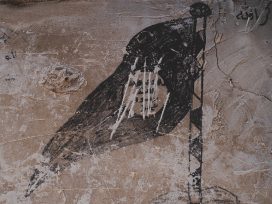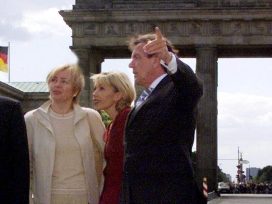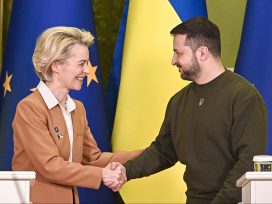One of the most widespread fallacies concerning the events surrounding the Bronze Soldier controversy in April 2007 has been the claim that ethnic integration of the Estonian society has failed. A comprehensive analysis of trends in Estonia during the last fifteen years shows that to a great extent the opposite is the case: integration has been quick and extensive, bearing in mind how slow changes concerning identity usually are. Integration has been accompanied by two contradictory processes. On the one hand, thanks to integration the self-consciousness of Russian speakers and their sense of “being at home” in Estonia has risen substantially. On the other hand, the greater involvement by Russian speakers in Estonian national issues and the blurring of ethnic boundaries has caused fear in the more conservative sections of both Estonian and Russian speaking groups. This fear has been increased by ideological opposition to Russia and has compelled the Estonian state to accentuate the marginal status of Russian speakers. The Bronze Soldier controversy in April 2007 plainly showed that the ideological basis and social policy of the Estonian state during the last fifteen years has become too narrow for changes that have occurred in inter-ethnic relations. As a result, a deadlock is forming that could hinder the further progress of Estonian society.
The first half of the 1990s: Russian identity from self-assertion to privatization
History provides a framework in which an ideology is constructed and upon which collective identities are based. Of course, memory of history is selective, foregrounding specific events while suppressing others. A narrative takes shape by means of this selection, which defines who one is, what one’s relations are with other ethnic groups and nations, and what roads of progress are open for the future. Reactions to challenges facing a society depend on the historical fate that is emphasized. A common understanding of history promotes certain kinds of solution, while making other kinds of solution unlikely and excluding a third type of solution altogether.
In some sense, history forms the social “charter” that existentially defines important values, relations and choices. The existence of the Molotov-Ribbentrop Pact and recognition of its illegitimacy became the ideological cornerstone for Estonian society after it regained independence. This provided a moral basis for the restoration of Estonian independence and the change of status and power relations between ethnic groups in Estonia. If the “Singing Revolution” brought the start of the self-assertion of Russian or Estonian identities, then the collapse of the Soviet Union brought the collapse of state identity – the category of the Soviet nation. This did not happen right away, however: in 1993, 59 per cent of the Russian-speaking community considered themselves representatives of Soviet culture. For the rest, however, the collapse of the Soviet Union meant the abandonment of a self-definition established on a morally unjust basis and its gradual replacement by an ethnic, regional, or linguistic identity. For example, the proportion of Estonian Russians who considered themselves as having a Russian identity rose to 85 per cent in 1992 and 92 per cent in 1993.
With Estonia on the threshold of independence, the Russian-speaking community hoped that a policy of two state languages would be established in Estonia and that all non-Estonians living permanently in Estonia would receive citizenship. Those illusions were quickly shattered. As Russian-speaking Estonian journalist Lilia Sokolinskaya later noted, describing the mood at the beginning of the 1990s: “Estonia turned its hate for the Soviet regime on the Russians here, making them responsible for all its ills”. After the abandonment of state identity, Russians’ ethnic identity was also put under pressure.
This was intensified in turn by the particular kind of minority policy operated by Estonia at the beginning of the 1990s, the direct goal of which was more or less the restoration of a mono-ethnic nation-state. The return of ethnic Russians to their historical homeland was hoped for and encouraged, and a strict citizenship policy was outlined that in principle would have given Russian speakers who had arrived in Estonia during the Soviet period the status of illegal immigrants. Although the harsh political rhetoric was not realized fully, it caused a large part of the Russian-speaking community to be crowded out of state-level politics. It was accompanied by a general withdrawal of Russian-speakers from the public sphere of Estonia. This period could be seen as the privatization of Russian identity in Estonia.
Privatization is a shift in identity, where new identity categories are neither accepted nor publicly opposed. The old identity is preserved in the private sphere, leaving out its entire social dimension. Privatization is a typical reaction in totalitarian societies or societies that have undergone a radical change in the balance of power, where people do not wish to accept a new system of values but are unable to maintain the old one openly.
Privatization was most clearly visible from 1991 to 1993, when the importance of a hold on power and self-determination diminished in the value system of Russian speakers, while the weight of these values rose in the value system of Estonians. During this period, the value of friends, family and convenience of life in Russian speakers’ assessments also rose. A very significant difference became manifest in the fact that while Estonians founded their identity to a great extent on historical narrative, Russian history played a rather modest role in the defining the identity of Russian speakers: only four out of ten respondents noted this as an important factor in their identity.
For Estonians, the survival of their nation was certainly one driving force, and this anxiety was directly related to Russians: in 1999, 63 per cent of Estonians still considered Estonia’s Russian speakers a national threat. The identity of Estonians constructed during the singing revolution had, therefore, a clearly self-assertive character that contrasted with Russians. If during the fall of the Soviet Union it was a positive factor, then in an independent Estonian state it quickly started to hinder social development.
Changes occurred in the attitudes and values of Estonians in the middle of the 1990s, when it became clear that the Russian-speaking community was in Estonia to stay. Thus in surveys taken in 1996, there was already a wish from an overwhelming part of Estonians for the Russian-speaking community to integrate: 26 per cent wished this unequivocally, while 40 per cent considered it clearly necessary. “For Estonians it meant an exhaustion of emotional opposition, a wish to be more pragmatic.”
The second half of the 1990s: A honeymoon for integration
During the second half of the 1990s, Estonians and Russian speakers’ attitudes towards integration were more positive than at any other time since the restoration of independence. At the end of the last decade, Estonians became considerably more tolerant towards Russian speakers. A third were prepared to actively help towards integration, while another third had reached the stage at which they had begun valuing minorities. Two-thirds of Russian speakers, meanwhile, expressed the wish to have closer social ties with Estonians.
Russian speakers were somewhat worse off in terms of economic integration, though the distribution of types of jobs was almost equal. Economic inequality was not directly perceived as being based on nationality. A certain levelling of values also occurred: to a large degree, Russian speakers had begun to share with Estonians the attitude that with a good education and hard work it was possible to succeed in Estonia. Russian speakers also began to attach more importance to knowledge of the Estonian language. In 1990, only 30 per cent of Russian speakers considered knowledge of Estonian to be a necessity; this grew to 82 per cent by 1995. The proportion of those who actually knew Estonian grew considerably: in 1993, only 13 per cent of Russian speakers claimed to be fluent or have a good command of Estonian; in 1999, this figure had grown to 29 per cent within the same group. During the same period, the proportion of those who did not know any Estonian dropped from 42 to 33 per cent. While in 1993 only 43 per cent of Russian speakers felt their command of Estonian was satisfactory, in 1999 this figure had increased to 67 per cent. Even if these statistics do not reflect precisely real language knowledge, they express an increasing tendency to admit the need to know the Estonian language.
The value of Estonian citizenship had also risen significantly among Russian speakers by 1999. While in 1993, 48 per cent wanted Estonian citizenship, in 1999 this had risen to a healthy 71 per cent. By the end of the last decade, 29 per cent of the Russian-speaking community had acquired Estonian citizenship. One could argue, then, that a remarkably large proportion of Russian speakers had accepted the Estonian state and wished to contribute to its development.
Analyzing the dynamics of identities in this period, one finds that shifts started to occur towards conformity in the attitudes and practices of certain sections of both Russian speakers and Estonians. This development indicates a dynamic of integrating identities – the adoption of certain new values, a reconciliation with which does not require the abandonment of important older values and the involuntary acceptance of others.
Based on the information provided above, one could conclude that these kinds of identity shifts affected a quarter to a third of both groups during the second half of the 1990s. This shift was also advocated by the media, where a stereotypical approach of focusing on the ethnic group as a whole began to be replaced by a concentration on individuals and specific personalities.
The construction of a self-assertive identity diminished substantially amongst ethnic Estonians. Characteristic of this identity construction was the view that Russian speakers are not loyal to Estonia, that they cannot consider Estonia as their homeland, and that their departure would benefit Estonia. Around a fifth of Estonians supported these attitudes at the end of the 1990s, and their opinion was often echoed in the readers’ letters to newspapers. This kind of rhetoric had disappeared from official statements by the end of the decade, however.
The creation of a self-assertive identity in the Russian-language media in Estonia during the second half of the 1990s was weak and unsystematic. This period was characterized by adaptations in Russian speakers’ identity – while they certainly adopted new practices, they preserved their own identity and its categories separately. They adjusted to everything that was new without accepting those things as their own.
This sort of identity trend is associated in large part with Russian citizenship. Russian citizens tended to have little interest in what was happening in Estonia, weak Estonian language knowledge, and misgivings about Estonians’ tolerance towards them in the future. Among Russian speakers, 18 per cent were Russian citizens at the end of this period. Approximately the same proportion of Russian speakers supported the view that they should fight for political power with Estonians.
For a majority of Russian speakers, privatization remained the primary strategy for identity, in other words the expression of identity among family and friends. This trend was supported to a great extent by Estonia’s development as an information society oriented towards consumption at the beginning of the 2000s.
2000-2004: Integration and consumer individualism
The advertisement “Palju toredaid inimesi” [Many great people] that appeared in 2000 could be considered the symbol of the recent optimism about integration. Since 2000, an individual-centred approach along with a widespread adoption of Western values of individualistic consumer society has nurtured and driven Estonia’s quick economic growth. The changes have taken hold especially among the younger people, who differ from older age groups by a higher regard for economic security and prosperity and an orientation towards self-realization and a life that is more interesting. The attainment of wealth became a more widespread goal scale and gained statistical importance in the value assessments of less well-off Estonians (the so-called “second Estonia”) and Russian-speakers. If, at the beginning of the 1990s, Estonians valued the possession of power and self-realization markedly more than Russians, in 2003 there were no major differences between the two groups in this respect. This change shows that Russian speakers had begun to realize themselves in Estonian society and supported the same values as Estonians: prosperity and a quality of life.
This shift in values signals the weakening of privatized identity and strengthening of integrating trends in the identity of Russian speakers. While the changes in values among Estonians were smaller, the growth of individualistic and consumerist values meant that the self-assertive identity was moving towards an integrative identity. This identity shift occurred in both ethnic groups. The new identity that was forming promoted elements new to both ethnic groups (individualism and consumerism), while at the same time demoting some former traits (ethnicity and tradition). These value shifts promoted a nascent state identity that offered possibilities of identification for both Estonians and Russian speakers. These changes were in large part in accordance with the goals of a state programme entitled “Integration in Estonian Society 2000-2007”.
Estonians’ sense of threat regarding the use of Russian and the large amount of Russian speakers in Estonia to a large extent decreased during this period. The new threats were perceived to be the invasion of English, the possible arrival of new immigrants, a weakening of a sense of national pride, and emigration.
The perception of threat connected to globalization gave rise to attempts to strengthen identity in conservative circles: new organizations were established, such as the Association for the Conservation of Estonian Language (1999) and the Estonian Club (2003), and a state programme entitled “Estonian Identity 2005-2009” was initiated. Similar fears arose in the more conservative wing of Russian speakers, when it was observed that global consumer culture is changing people’s values, especially those of the younger generation. An increasing similarity in values to Estonians evidently fostered the consolidation of Russian speakers and Estonians.
However endeavours to encourage ethnic mobilization did not evoke much resonance: the political mainstream and public opinion did not share these fears, and support for conservative parties and nationalist-minded parties was very low, both among Estonians and Russian speakers.
What was important were economic goals and accession to the European Union. A liberal ideology of progress was dominant. The image of a “second Estonia” and the introduction of a salary for mothers evoked a general discussion in society, though in the case of the latter the principle of gender equality, rather than questions of nationalism, took centre stage.
2004-2007: Fear of integration
According to a survey carried out in December 2004, the three most important national events in the eyes of Estonians that year were joining Nato and the European Union and the removal of the Lihula monument. These events created a context on the basis of which new trends in identity policy began to develop.
Fear of the weakening of ethnic identities became a burning issue in radical nationalist circles and ways were actively sought for mobilizing nationalist sentiment. This feeling of threat is a major reason for the creation of conflicts between two subgroups of the same category. In such situations, ethnic conflict is the most effective way to sharpen the definition of boundaries between groups. An opportunity for such a conflict was offered by the removal of the Lihula monument. Even Estonians who felt that the Lihula monument’s ideological content and aesthetic form was unacceptable perceived its removal as an injustice. However, the removal was seen by more nationalist minded Estonians as a downright insult, since for a number of years the government had done nothing to remove the Soviet war memorial otherwise known as the Bronze Soldier. The Lihula monument event thus became a motive for heightened rhetoric. This in turn helped to activate nationalist-minded Russian speakers. In spring 2005, the controversial ethnic Russian politician Dimitri Klenski kicked up a storm by saying in a television interview that a small bomb next to the Bronze Soldier would be a great opportunity to mobilize the Russian community. A series of vandalism cases against Soviet monuments in Tonismägi and elsewhere fuelled the controversy.
The development of events was greatly influenced by Russia’s new identity policy. Russia’s celebration of the fiftieth anniversary of WWII clearly showed that victory in the “Great Patriotic War” is one of the most important sources of national pride for Russian identity. This is an important shift that has also influenced the dynamics of the identity of Estonian Russian speakers: while at the beginning of the 1990s Estonian Russian speakers did not consider events in Russian history to be important to their identity to any degree, during the last few years victory in “Great Patriotic War” has turned into a central element of the Russian-speaking community’s positive self-image.
The more important the Bronze Soldier became to the creation of the identity of Russian speakers, the more the Estonian nationalists demanded its removal. Public opinion, meanwhile, was still rather indifferent and appealing to Estonian national pride was necessary in order to change this attitude. After the riots in Tallinn, one member of the Estonian Patriotic Movement, Jüri Böhm, admitted that in a previous incident in Tonismägi in 2006 he and his compatriots had deliberately invited the humiliation of the Estonian flag in order to “awaken the Estonian nation”, which had been “drugged by the society of prosperity”. The events, broadcasted in the national news, were as follows: When the two Estonian nationalist interrupted a demonstration in support of the Bronze Soldier carrying the national flag and a banner condemning the Soviet Army for the Estonian occupation, the police arrested them “for their own safety” and allowed the defenders of the statue to continue their meeting waving Soviet flags.
Although the activist groups from both sides were and are relatively small, the dialogue between them was intensified in the media. Paradoxically, the situation offered a real chance to highlight important shifts in the attitudes and values of people at the margins of society. In Estonian politics, this meant arriving at an important decision – until this time, there had been a lack of public opinion about how to solve the problem.
The nationalists of both groups achieved their goal at least partially with the relocation of the Bronze Soldier in April 2007, insofar as ethnic contrasts grew. A comparison of identity orientations among Estonians and Russians in 2002 and the summer of 2007 shows a shift in both groups towards self-assertion. While in 2002 there was a clear self-assertive identity for 19 per cent of Estonians, after the riots this figure rose to 23.3 per cent. The proportion of Estonians supporting an integrative identity dropped from 53 per cent in 2002 to 36 per cent. Importantly, the proportion of Estonians prepared to tolerate the existence of Russian speakers without wishing to have contact with them grew from 28 per cent in 2002 to 40 per cent in 2007.
Among Russian speakers, the proportion of those who discouraged integration grew from 34 per cent to 39 per cent while that of those supporting integration dropped from 46 per cent to 27 per cent. Although among Estonians and Russian speakers the percentage of those supporting an oppositional identity did not rise directly as a result of the April events, the uncertain situation markedly increased the proportion of those who had their doubts about future development – among Estonians the figure was 40 per cent and among Russian speakers 33 per cent. Looking at current trends in Estonian society as a whole, 38 per cent have doubts about integration (29 per cent are against it and 33 per cent support it). The 38 per cent that have doubts mirrors the discord between Estonia’s social development during the last 15 years and an ideological system that has failed to adapt.
The reason for the current identity crisis is not, then, the Russian community’s lack of integration, since the percentage of those who have not integrated at all stands at only 7.5 per cent. On the contrary, two-thirds of Russian speakers have integrated to a moderate or great extent, have adapted to the way of life of Estonia, have accepted the rules of the game established by Estonians, and have received citizenship and learned Estonian. This has not brought about an elevation of their status in Estonian society.
Recent research shows that values connected with material prosperity and self-realization rose substantially more among Russian speakers than among Estonians. At the beginning of the 1990s these values remained low on the list for Russians and at the turn of the century had risen to the same level. One can conclude, then, that the period of the privatization of identity among the Russian community that followed the collapse of the Soviet Union is over. A large part of Russian speakers are oriented towards an integrating identity and wish to realize themselves in Estonia. Nevertheless, Estonia’s conservative identity policy gives them no chance to do so. They have a right to ask what have they done to deserve being treated like this.
A new ideological foundation is needed for Estonia that would establish who we are, where we have come from, where we are going, and what status the different ethnicities living in Estonia have. Above all, this applies to the Russian-speaking minority in Estonia. If such a process is not initiated, the integrative trend in the identity of the Russian-speaking community will be replaced by an oppositional one.
The Russian-speaking community as a transitional minority
Contemporary theories of minority rights generally recognizes two types of minority – immigrant minorities and autochthonous minorities. The entire legal system of European minority rights is based on this contrast – rights are guaranteed to autochthonous minorities and languages, while immigrants and their languages largely have no rights. Theorists have observed that the Russian-speaking minorities that arose as a result of the collapse of the Soviet Union are not autochthonous but arose as a result of illegal colonization. Therefore this is not an immigrant minority in the regular sense of the word, formed when people with a similar ethnic background migrate to another country for economic reasons. Until now, there lacks a suitable category for describing the minorities that arose after the fall of the Soviet Union. Now, after more than 15 years, it is easier to answer this question. Looking back at the development of the Russian-speaking minority of Estonia, it is reasonable to name them a “transitional minority” – a minority that is indeed not autochthonous, yet historically heading in that direction.
Migrant minorities are defined (at least in a European context) by not having citizenship of the country of destination; a large ethnic difference with the majority; lack of historical and cultural tradition in the country of destination; major differences in cultural traditions and values; a low and often stigmatized status; and low levels of cultural integration and knowledge of the language. Members of an autochthonous minority, meanwhile generally have citizenship; are close in ethnic terms with the majority group; have a long cultural tradition and historical ties with their place of residence; are similar with the majority ethnic group in terms of values and attitudes; are generally loyal towards the state; and often receive cultural recognition from the state.
Looking at today’s Russian-speaking minority in Estonia, they are much closer to a typical autochthonous minority than migrant minority: more than half are Estonian citizens; they are culturally similar to Estonians, they have over half a century of unbroken history in Estonian with centuries-old cultural ties; in terms of traditions and appearance they are similar to Estonians; two-thirds speak Estonian; and the language and identity shift is already a real threat for them, like for many autochthonous minorities in Europe.
Conclusions
The recognition of the Russian-speaking community in Estonia as a transitional minority would mean that their access to the rights guaranteed to autochthonous minorities would be recognized when the transitional period is over. What comes to the foreground here is the character of a future-oriented programme that deals with the concept of a transitional minority. If a consensus were to be reached that the Russian-speaking community is a transitional minority, then it would be possible to negotiate terms for their recognition as an autochthonous minority and accompanying rights and assistance from the state. The programme would have to be realistic, in other words it should be comprised of benchmark goals for the development of integration so that the transitional minority would be able to begin their cultural build-up. In practical terms this should be the same kind of process that Estonia and other new EU member states had to undergo during the accession process.
The European Charter for Regional or Minority Languages would offer an acceptable framework for this. If it were to become a signatory, Estonia could officially recognize the Russian-speaking community as an autochthonous minority and take on obligations to defend this culture and language. The ratification of the charter would allow the rights guaranteed by completing the process to be fixed. If that period were to be successfully completed, the ratification of the document in the Estonian Parliament would signal the lawful recognition of the autochthonous minority status of the Russian-speaking community.






